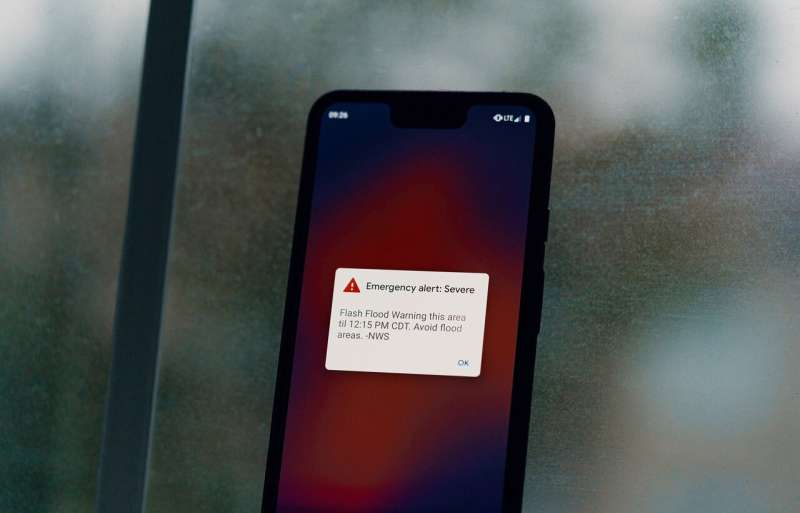Despite the widespread use of mobile phones for delivering emergency alerts, current systems do not prompt recipients to take protective action. By examining people’s responses to alerts, the researchers propose several measures to enhance the effectiveness of alert systems. Credit: Flash Flood Warning- Cell Phone Wireless Emergency Alert / Tony Webster
Mobile phones have become invaluable for receiving emergency alerts such as weather warnings, evacuation notices and notifications about missing persons. In Japan, where earthquakes are frequent, they are vital for delivering earthquake warnings and advising people to take protective actions beforehand.
To deal with such situations promptly, the Earthquake Early Warning (EEW) system sends out notifications to areas expected to experience strong tremors by detecting primary seismic waves (P-waves) that arrive before the secondary waves (S-waves). However, the short time between receiving the notification and the arrival of S-waves requires immediate response from individuals in affected areas.
But this is not always the case as Professor Kazuya Nakayachi from the Faculty of Psychology, Doshisha University, Japan, explains, “Designers of the disaster information system assume that those who receive an emergency alert will immediately take protective action, but this is rarely the case. People stay still looking at their cell phone screens receiving the alert.” Surveys conducted in Japan found that despite advanced warnings, people fail to take protective actions.
To determine why individuals might not act upon receiving such warnings delivered through mobile phones, Prof. Nakayachi, along with Dr. Ryosuke Yokoi from Kyoto Tachibana University and Dr. James Goltz from Kyoto University conducted two surveys, investigating people’s responses immediately after receiving EEW alerts on their mobile phones between 2021 and 2023.
Their findings, published online in the International Journal of Disaster Risk Reduction on 15 April 2024, aim to improve the effectiveness of EEW alerts to reduce the risk of injury or fatalities during earthquakes.
The researchers collected responses from participants affected by the 6.0 magnitude earthquake in Chiba Prefecture, which occurred on October 1, 2021, and the 6.3 magnitude earthquake in Ishikawa Prefecture on May 5, 2023. To determine the initial reactions to the alerts, the participants were asked the following question: “When you received the EEW alert on your mobile phone, what did you do first and what did you do next?”
2024-05-21 12:51:02
Article from phys.org
